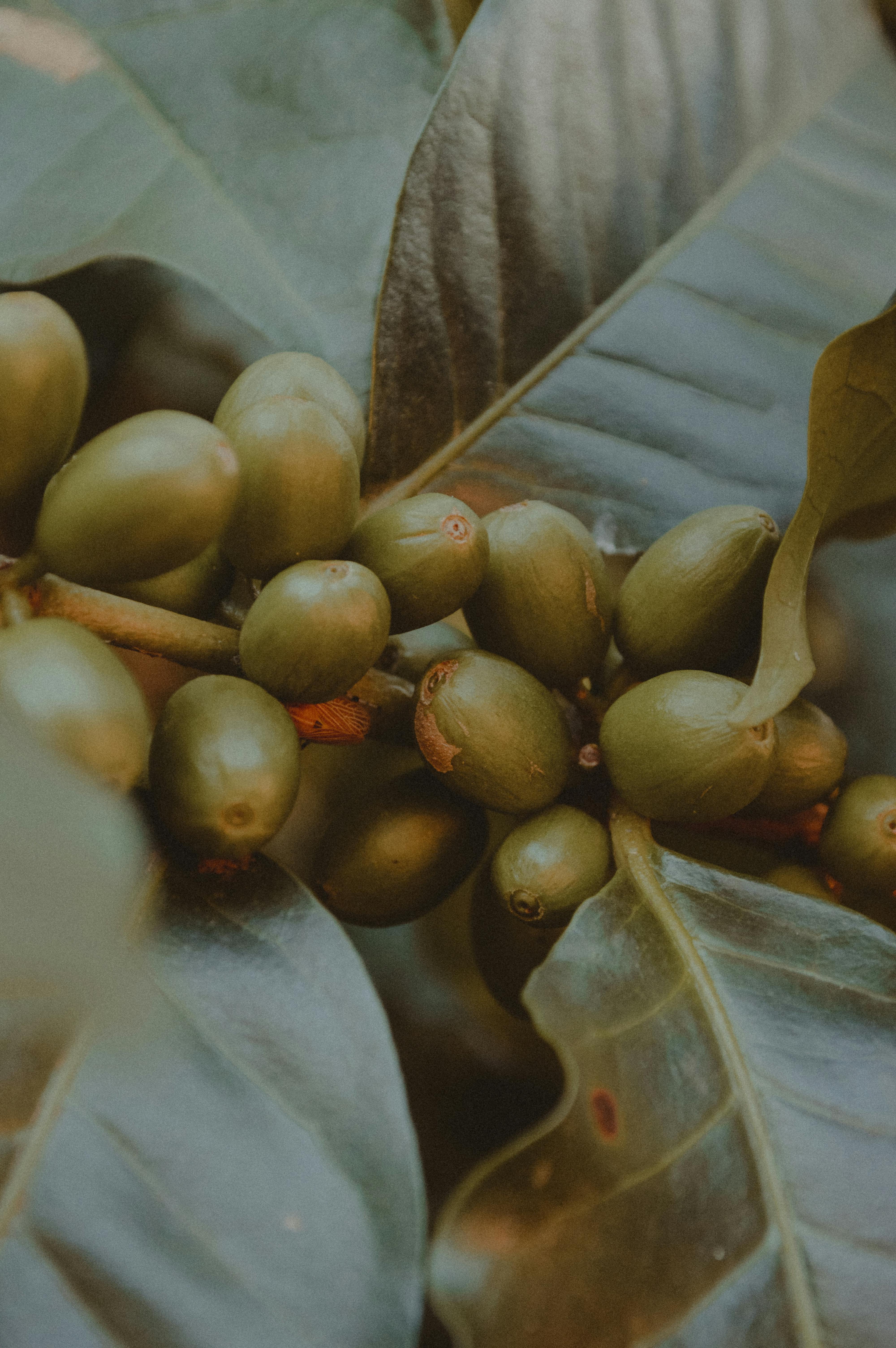At HopaCoffee.com, our mission is to enhance your coffee journey by providing you with an exquisite selection of premium coffee blends and flavors. We understand that coffee is not just a beverage, but an art form in itself. That’s why we’re here to guide you through the captivating world of coffee tasting notes. Join us as we embark on a sensory adventure, exploring the intricate flavors, aromas, and nuances that make each cup of coffee a unique experience. Get ready to awaken your senses and elevate your coffee appreciation to new heights.

The Basics of Coffee Tasting
Coffee tasting, also known as cupping, is the process of evaluating the flavors, aromas, and overall quality of a coffee. It’s a sensory experience that allows us to appreciate the nuances and complexity of different coffee varieties and origins. By developing our palate for coffee tasting, we can better understand our personal preferences and make more informed decisions when purchasing coffee.
What are Coffee Tasting Notes?
Coffee tasting notes are the specific flavors, aromas, and characteristics that can be detected when tasting a particular coffee. These notes serve as a guide for describing and understanding the taste profile of a coffee. For example, a coffee might have tasting notes of chocolate, citrus, and caramel. These notes are often identified through the process of cupping, which involves smelling and tasting the coffee in a controlled manner.
Why Are Coffee Tasting Notes Important?
Coffee tasting notes are important because they provide valuable information about the flavor profile of a coffee. They help us understand the unique characteristics of each coffee and make comparisons between different varieties and origins. Tasting notes can also help us choose coffee that aligns with our personal preferences. By familiarizing ourselves with different tasting notes, we can better appreciate the diverse range of flavors and aromas that coffee has to offer.
How to Develop Your Palate for Coffee Tasting
Developing your palate for coffee tasting is a journey that requires practice and patience. Here are some steps you can take to enhance your sensory abilities and refine your coffee tasting skills.
Understanding the Five Basic Tastes
To develop your palate for coffee tasting, it’s important to understand the five basic tastes: sweet, sour, salty, bitter, and umami. These tastes are detected by different taste receptors in our mouth. By paying attention to these tastes when drinking coffee, you can start to identify and appreciate the various flavor attributes in a cup.
Training Your Sense of Smell
A significant part of coffee tasting is the sense of smell. Our ability to detect different aromas greatly contributes to our overall coffee tasting experience. To train your sense of smell, start by actively smelling different ingredients and foods. Focus on building your olfactory memory by trying to identify specific smells and associating them with corresponding scents. This practice will help you detect and appreciate the aromatic nuances in coffee.
Practicing Coffee Cupping
Coffee cupping is a technique used by professionals to evaluate and compare different coffees. To practice coffee cupping at home, you’ll need freshly roasted coffee, a cupping spoon, and a cupping bowl. Start by smelling the dry coffee grounds, noting any aromas that you detect. Then, add hot water to the coffee and let it steep for a few minutes. Break the crust that forms on the surface, inhale deeply, and take a spoonful of the liquid to taste. Pay attention to the acidity, body, flavor, and aftertaste of the coffee. Cupping regularly will help you refine your palate and develop a better understanding of different coffee profiles.
Key Elements to Consider when Tasting Coffee
When tasting coffee, there are several key elements to consider that contribute to the overall flavor profile of the brew. By paying attention to these elements, you can better articulate and appreciate the unique characteristics of each coffee.
Aroma
The aroma of coffee refers to the smells that are released when coffee is brewed. It can range from floral and fruity to nutty and chocolatey. The aroma gives us a preview of what to expect from the taste profile of the coffee. Take a moment to inhale deeply and appreciate the aromatic notes before taking a sip.
Acidity
Acidity refers to the brightness and liveliness of the coffee. It can range from bright and tangy to mild and soft. Acidity adds complexity and balance to the flavor profile of the coffee. Pay attention to how the acidity interacts with other flavor notes, as it can greatly impact the overall taste experience.
Body
The body of a coffee refers to its weight and texture in the mouth. It can range from light and tea-like to full and syrupy. Body contributes to the overall mouthfeel of the coffee and influences how the flavors are perceived. Consider whether the coffee feels light or heavy on your tongue and how it coats your palate.
Flavor
The flavor of coffee encompasses the various taste notes that can be detected when tasting the brew. It can include flavors such as chocolate, citrus, caramel, floral, or earthy. The flavor is the primary aspect of coffee that we focus on when tasting, as it represents the essence of its taste profile. Take note of the specific flavors you can identify and try to articulate them as accurately as possible.
Aftertaste
The aftertaste of coffee refers to the lingering flavors that remain in your mouth after swallowing. It can range from short and clean to long and complex. Aftertaste provides additional insights into the quality and complexity of a coffee. Pay attention to any residual flavors and how they evolve over time.
Describing Coffee Tasting Notes
Describing coffee tasting notes can be a challenging task, especially for beginners. However, with practice and exposure to different coffees, you can gain confidence in articulating your sensory experiences. Here are some tips to help you effectively describe the tasting notes of coffee.
Using Common Vocabulary
Developing a shared vocabulary for describing coffee tasting notes can help facilitate communication and understanding among coffee enthusiasts. Familiarize yourself with common tasting terms such as fruity, floral, nutty, chocolatey, bright, tangy, and smooth. By using these terms, you can more accurately convey your experiences and engage in meaningful discussions about coffee.
Writing Effective Coffee Tasting Notes
When writing coffee tasting notes, it’s important to be specific and descriptive. Instead of saying “this coffee tastes good,” try to identify and express the specific flavors and aromas you perceive. Use colorful language to paint a vivid picture of your sensory experience. For example, instead of saying “this coffee is citrusy,” you could say “this coffee has vibrant notes of zesty lemon and tangy grapefruit.” Writing effective tasting notes will not only enhance your own coffee tasting journey but also help others discover new and exciting coffees.

Improving Your Coffee Tasting Skills
To further enhance your coffee tasting skills, consider exploring and experimenting with different brewing methods and coffee origins. Additionally, joining coffee tasting clubs or workshops can provide you with opportunities to learn from experienced professionals and engage in group tastings and discussions.
Experimenting with Different Brewing Methods
Each brewing method has the potential to bring out different flavors and characteristics in coffee. By experimenting with various brewing methods such as pour-over, French press, and espresso, you can explore the full spectrum of flavors that a coffee can offer. Take note of how the brewing method affects the taste profile and discover your preferred brewing style.
Exploring Various Coffee Origins
Coffee beans are grown in different regions around the world, each with its own unique climate, soil conditions, and farming practices. Exploring coffee from various origins, such as Ethiopia, Colombia, Brazil, and Kenya, can introduce you to a wide range of flavors and aromas. Pay attention to the distinct characteristics of each origin and how they contribute to the taste of the coffee.
Joining Coffee Tasting Clubs or Workshops
Joining coffee tasting clubs or attending workshops can provide valuable learning opportunities and foster a sense of community among coffee enthusiasts. These gatherings often involve guided tastings, discussions, and educational sessions led by industry professionals. By participating in these events, you can expand your knowledge, refine your palate, and connect with like-minded individuals who share your passion for coffee.
Tasting Different Types of Coffee
Coffee comes in various forms and preparations, each with its own distinct characteristics. Here are some common types of coffee that you can explore and taste.
Single-Origin Coffees
Single-origin coffees are made from beans that are sourced from a specific geographic region or farm. These coffees often highlight the unique flavors and qualities associated with their place of origin. Tasting single-origin coffees can provide insights into the terroir and craftsmanship of each coffee-growing region.
Blends
Coffee blends are a combination of beans from different origins or varieties. Blends are carefully crafted to achieve a specific flavor profile and balance. Tasting blends can give you a well-rounded and complex experience, as different beans complement and enhance each other.
Espresso
Espresso is a concentrated form of coffee that is brewed using high pressure and finely ground coffee beans. Espresso has a unique flavor profile characterized by its boldness, intensity, and rich crema. Tasting espresso can help you appreciate the nuances and complexities of this beloved coffee preparation.
Cold Brew
Cold brew coffee is made by steeping coffee grounds in cold water for an extended period of time. This brewing method produces a smooth, low-acid, and slightly sweet coffee concentrate. Tasting cold brew can introduce you to a refreshing and different coffee experience compared to traditional hot brews.
Flavored Coffees
Flavored coffees are infused with additional flavors, such as vanilla, caramel, or hazelnut. Tasting flavored coffees can be a fun and indulgent experience, as you explore the added dimensions of flavor and aroma.

Pairing Coffee with Food
Pairing coffee with food can elevate both the coffee and the culinary experience. Consider the following tips when creating coffee and food pairings.
Creating Complementary Flavor Profiles
When pairing coffee with food, look for complementary flavor profiles. For example, a fruity and acidic coffee can pair well with citrusy desserts, while a dark and chocolaty coffee can harmonize with chocolate-based desserts. Consider the flavors and intensities of both the coffee and the food to create a harmonious pairing.
Enhancing Coffee and Food Pairings
To enhance coffee and food pairings, pay attention to the textures and mouthfeel of both the coffee and the food. Experiment with contrasting textures, such as pairing a light-bodied coffee with a creamy dessert, or matching a bold coffee with a crunchy pastry. The interplay between textures can create a more dynamic and enjoyable pairing experience.
Understanding Coffee Grading and Specialty Coffees
Understanding coffee grading and specialty coffees can provide insights into the quality and uniqueness of different coffees.
Learning About Specialty Coffee
Specialty coffee refers to coffee beans that have been carefully cultivated, harvested, and processed to meet strict quality standards. These coffees often come from specific regions or farms and are characterized by their exceptional flavors and distinctiveness. Learning about specialty coffee can help you appreciate the dedication and craftsmanship involved in producing high-quality beans.
Understanding Coffee Grading Systems
Coffee beans are graded based on several factors, including size, density, and defects. Grading systems vary depending on the origin and industry standards. Understanding coffee grading systems can give you an idea of the quality and consistency of the coffee you’re purchasing.
Exploring Different Specialty Coffee Varieties
Specialty coffee encompasses a wide range of varieties, each with its own unique flavor profile and characteristics. Varieties such as Arabica, Robusta, and Geisha have distinct origins and qualities. Exploring different specialty coffee varieties can broaden your understanding of the diversity and complexity of the coffee world.
The Role of Tasting Notes in Coffee Purchasing
Tasting notes play a crucial role in coffee purchasing decisions, helping us navigate the vast array of coffee options available.
Reading and Decoding Coffee Packaging
When purchasing coffee, the packaging often includes tasting notes as a way to describe the flavors and aromas of the coffee. These tasting notes can guide you in selecting coffee that aligns with your preferences. By reading and decoding the information on coffee packaging, you can make more informed choices and discover new and exciting flavors.
Choosing Coffee Based on Your Preferred Tasting Notes
By becoming familiar with your preferred tasting notes, you can actively seek out coffee that matches your flavor preferences. Whether you enjoy bright and fruity coffees or prefer deep and chocolatey notes, understanding your preferred tasting profile can help you consistently choose coffee that satisfies your palate.
Conclusion
Coffee tasting is a wonderful journey of exploration and appreciation. By developing our palate, understanding the different elements of taste, and familiarizing ourselves with the diverse world of coffee, we can enhance our coffee experiences and make more informed purchasing decisions. So grab a cup of your favorite coffee, take a moment to savor the flavors, and enjoy the art of coffee tasting. Cheers to a world of exceptional coffee!

